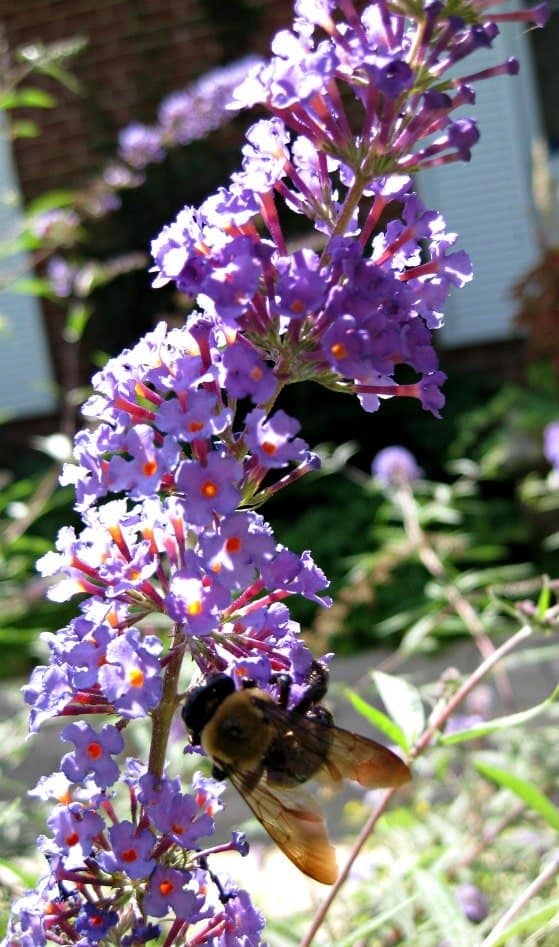
My interest in bees began about 10 years ago, when I happened to see a swarm of wild honeybees in migration. They were hanging in a tight oval-shaped ball from a low tree limb, and at first I was unsure what this could be. Soon enough, I saw the ball was full of movement with thousands of tiny wings all a-flutter, enclosing the female queen at the centre.
In the 19th century, a farmer with any sense would have gone out there and captured the swarm in a box, and put it in a hive for honey production. That is still done, and usually without injury to the lucky gardener, for bees are amazingly docile when away from their hive and home territory. (Of course, those sensitive to bee stings wouldn’t and shouldn’t risk this.)
Bees thrive wherever there are sufficient nectar-producing flowers, including cities where there are more dandelions than roses. I spotted a beehive on the fire escape outside a fourth-floor apartment in an industrial neighbourhood, and there are two hives installed at the Toronto Botanical Garden, amidst a deluxe bed of nectar-rich plants. Bees are always with us, and their persistence is a blessing for there would be little to eat without them. Seventy percent of fruit and vegetable crops rely on bees (and bee-like flies) to pollinate their flowers and begin the fruiting process.
Recently, commercial honeybee colonies have been plagued with a mysterious disease (Hive Collapse Disorder) that has killed entire hives outright, particularly hives used for commercial purposes. The use of rented honeybee hives for pollination of huge agricultural fields puts a significant stress on the colonies and what a bee does with its life. Trucking bees from one end of the continent to the other is thought to have a large influence on susceptibility to hive collapse. It’s a sad fact that many millions of bees spend their whole lives living on a flatbed truck.
My thought is that growing plants that provide a consistent source of what a bee wants would be a good way to encourage healthy wild colonies in any location. If farms had enough wild bee colonies in their region, rental bees wouldn’t be necessary and Hive Collapse Disorder might disappear. Local wild bees go hand-in-hand with local growing as part of sustainable agriculture, and it’s an added bonus that watching bees at work is entirely amusing.
I notice in my garden that early bees (important for pollinating apples and many of the stone fruits) spend a lot of time visiting the minor bulb blooms like blue Scilla siberica, blue and white Chionodoxa forbesii and white Puschkinia libanotica. I also see them on early February daphne (Daphne mezereum) and in the flowers of my ‘Red Jade’ weeping crabapple tree. They love roses, catmint (Nepeta spp. and cvs.), purple coneflower (Echinacea purpurea), black-eyed Susans (Rudbeckia spp. and cvs.), cranesbills (Geranium spp. and cvs.) and even blue sea holly (Eryngium alpinum), which doesn’t look like it would have much nectar, but looks can be deceiving and the bees spend time on it. The butterfly weed flower (Asclepias tuberosa) is just about their favourite thing and they push each other around to get the best feeding spot (this plant is essential to Monarch butterflies).
Bees also like the butterfly bush (Buddleia davidii), which is hardy only to Zone 6, but it can be grown in colder zones as flowers are produced the first season from a pot purchased in spring. Use it as an annual or overwinter it in a container stored in the garage. In autumn, my ‘White Opal’ Michaelmas daisy (Aster novi-belgii ‘White Opal’) really draws them, along with the broad blossoms of tall Sedum spectabile and taller boneset (Eupatorium maculatum).
Gardeners are seldom stung by bees. Despite all the meddling I do while they’re just trying to get an honest day’s work done, I’ve never attracted the least attention from them. (It’s the wasps that will get you, and for no good reason!)
If you want to learn more about the poor bees that are trucked about the continent, look for Douglas Whynott’s interesting book, Following the Bloom: Across America With the Migratory Bee Keepers (Tarcher, 2004). A more hopeful and humourous outlook can be found with Laurence Packer, a Canadian bee enthusiast, in his book, Keeping the Bees: Why All Bees Are at Risk and What We Can Do to Save Them (HarperCollins, 2010). That’s a really good holiday gift!
Other posts by Judith this week:


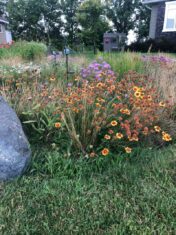
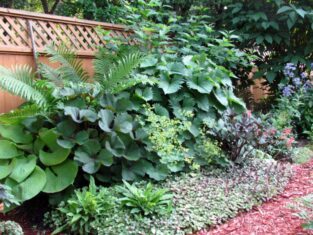
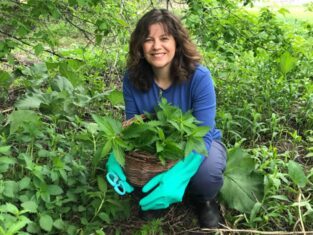
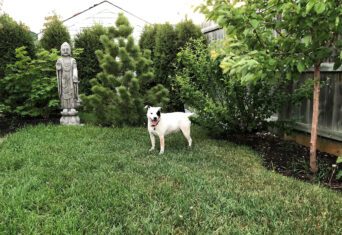
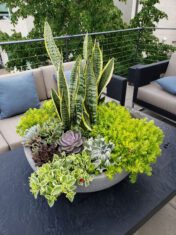
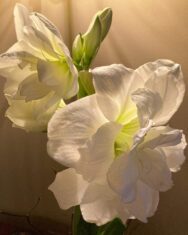

Hi Jackie,
Thanks for the tip about ‘Blue Fortune’ agastache, I’ll be looking for that in spring. I’m trying to sprinkle more bee-luring plants into my garden, to keep it alive and buzzing!
— Judith
I didn’t know that about the decline being related to the bees-for-hire and their transport! Wow, thanks Judith, interesting article. And I have the same experience of bees, hordes and hordes of them buzzing around, but not even reacting to me as I wade through a large swath of agastache, they’re just too busy. ‘Blue Fortune’ agastache seems the biggest bee magnet in my gardens, pretty much all season long. Just a great plant.
Hi Carmel,
Good on you for providing a home for bees! It’s easy to forget that they first must find a place to live, and then find a consistent food source. I noticed that in last summer’s high heat, bees were stopping for a drink at the edge of my bird bath. Having water available near the vegetables and flowers is an added bonus for them.
— Judith
Hi, I really enjoyed your article on garden bees. I’ve been reading a few articles on it so I decided to order a beehive home for the bees, I really hope that the bees will nest in it and pollinate my veg. garden as well as my flower beds. Thank you for the info. on bees.